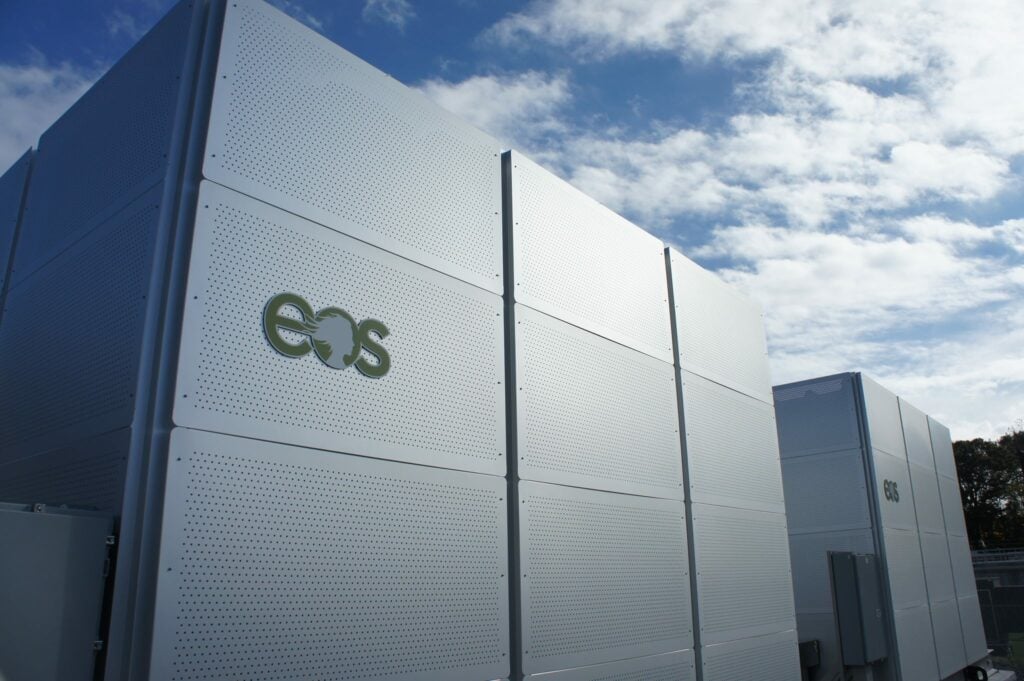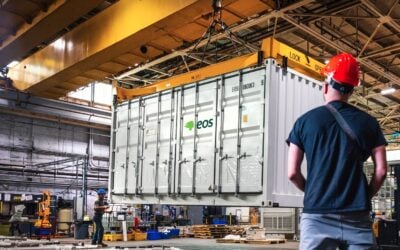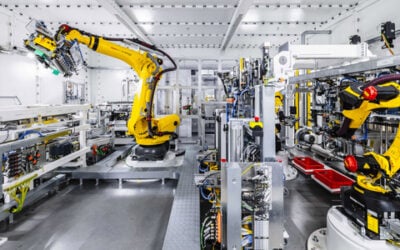
Eos Energy Enterprises now has an order backlog worth US$457.3 million following a busy quarter for the US zinc-based battery storage solutions provider.
The company, headquartered in Pittsburgh, went public via a special purpose acquisition company (SPAC) merger in late 2020. It has just published its financial results presentation for the second quarter of 2022.
Enjoy 12 months of exclusive analysis
- Regular insight and analysis of the industry’s biggest developments
- In-depth interviews with the industry’s leading figures
- Annual digital subscription to the PV Tech Power journal
- Discounts on Solar Media’s portfolio of events, in-person and virtual
Eos said it booked orders worth US$257.5 million during the quarter, with year-to-date booked orders accounting for US$324.7 million of the near-half-billion-dollar total backlog.
That demonstrates considerable growth from 2021, when the backlog at year-end was US$148.7 million. Company CEO Joe Mastrangelo said in a conference call to discuss earnings that the backlog equates to close to 2GWh of customer orders.
While Eos said prior to the listing that it didn’t anticipate reaching profitability until at least halfway through 2023, revenues are also on an upward trajectory, although still relatively modest.
In Q2 2022 it netted US$5.9 million revenue, a 79% increase from Q1 2022’s US$3.298 million. In the whole of 2021, it had banked US$4.6 million revenue. That said, the company has some way to go in the second half of the year to achieve its forecasted US$50 million revenue target for this year.
For Eos and other battery storage companies – especially those not using lithium-ion batteries in their systems – it is becoming a question of whether they will be able to scale up manufacturing to meet an expected wave of demand for large-scale energy storage equipment, in addition to achieving cost reduction targets.
That too appears to be going well, with the company reporting it is on-track to get to a targeted 800MWh of annual manufacturing capacity during this year and continued reducing its unit production costs while improving performance. Having added about 65MWh of production capacity during Q1, Eos is now at 536MWh annual capacity as of 30 June 2022 when the reported period ended.
However, its costs of goods sold was US$36.9 million and its cash balance at the end of the quarter stood at US$16.3 million, depleted from US$56.6 million at the end of Q1 2022 and US$105.7 million at the end of 2021. Net loss for the quarter of US$56.7 million was recorded, while in Q1 it had been US$45.8 million.
As reported by Energy-Storage.news yesterday, Eos Energy Enterprises has just secured a US$85 million loan facility with Atas Credit Partners. Earlier in the quarter it inked an equity purchase agreement with Yorkville Advisors for up to US$200 million, of which US$12.5 million has been utilised to date.
Policy and customer-driven demand potential
CEO Mastrangelo talked about opportunities on the horizon and big picture market movements that could benefit the company’s long-duration energy storage value proposition. Eos’ Zynth battery units use a zinc hybrid cathode that enables storage and discharge of three-hour duration, but units can be connected and stacked to provide up to 12 hours.
The US Inflation Reduction Act could be a catalyst for the energy transition as well as for domestic manufacturing, including investment tax credit (ITC) and production tax credit (PTC) incentives to downstream and upstream battery companies, Mastrangelo said. Eos claimed that close to 90% of its bill of materials (BOM) comes from US suppliers.
He also mentioned that in California, a US$140 million grant programme is going to be available to support utility-scale long-duration energy storage (LDES) projects, through the California Energy Commission (CEC), equivalent to a sort of state-level Department of Energy.
The company has also submitted an application for a loan from the US Department of Energy’s Renewable Energy and Energy Efficiency Loan Program.
Elsewhere, Mastrangelo said various global territories like India and Europe hold promise, with interest in energy storage growing in the latter in the wake of the gas supply shock caused by the Russian invasion of Ukraine and India already on course to deploy large amounts of storage to facilitate renewable energy integration.
As reported by Energy-Storage.news in July, a previously agreed master supply agreement to US EPC and developer Bridgelink Commodities for projects in Texas’ ERCOT market was upscaled in early July from 240MWh rising to 500MWh to a 1.1GWh total order. Those projects will be between three- and eight-hours duration, for a total value of about US$220 million.
Eos claimed that its pipeline of potential opportunities includes 7GWh of customer interest at the technical proposal stage, worth about US$1.8 billion, 16GWh (US$4.3 billion) at the non-binding quote stage and 4GWh at the letter of intent (LOI) or firm commitment stage (US$0.9 billion). Meanwhile it has 29GWh of potential lead generation worth US$6.2 billion counted in its pipeline.






